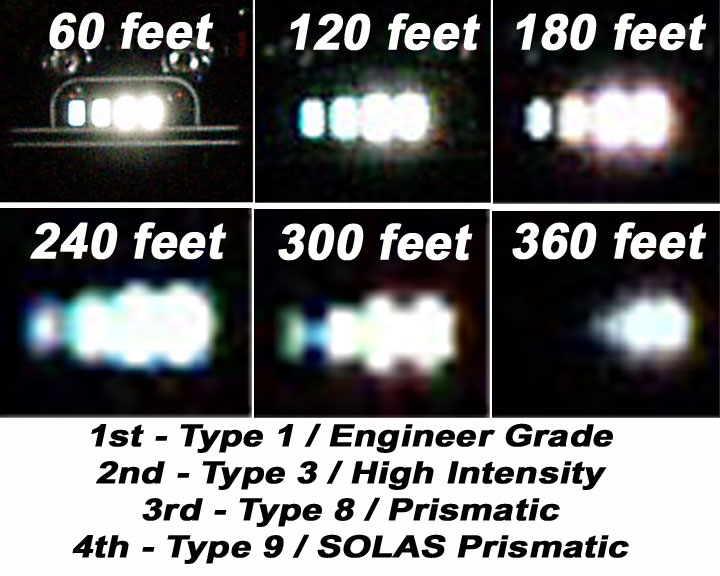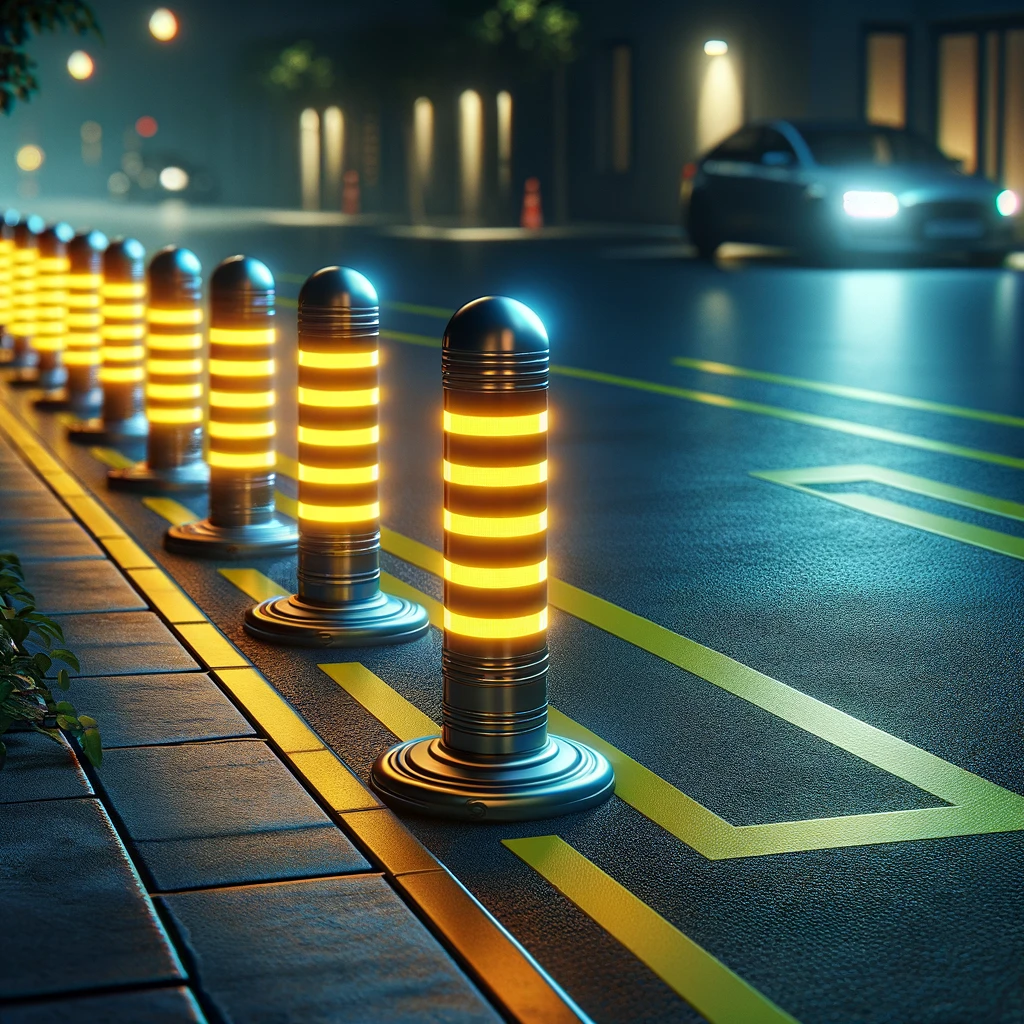Definition of Retro Reflective Tape – (www.tapedealer.com)
By definition, retro reflective tape is a film that either through the use of glass spheres or man made prisms, reflects light or radiation back to its source. (Source – Cambridge English Dictionary)
This seems like a simple task but in fact it is quite complicated. Just like a portrait that stares at you no matter where you are in the room, reflective tape reflects light back to the source and the source only no matter where that source is positioned. Think of it this way. If you were in the correct position in front of a parabolic shape like a satellite dish and threw a ball into the dish it would always bounce back and hit you. If you throw a ball into the corner of a racquetball court it will hit one wall, then the other, and then come back to you. (In both examples you need to be in the right spot.) Glass bead retro reflective tape (original technology) would be like the satellite dish and prismatic retro reflective tape (newest technology) would be like the racquetball court.
The picture below shows 4 types of tape side by side photographed at different distances with a flash camera. The two tapes on the left are glass bead tapes (engineer and high intensity). The two tapes on the right are prismatic (V92 and SOLAS) As you can see the prismatic tapes are visible from much farther away.

Oftentimes, reflective and retro-reflective are confused with each other. All retro-reflective surfaces are reflective but not all reflective surfaces are retro-reflective. Consider a mirror. It is reflective. However, if you shine a light on it at an angle the light will bounce and hit somewhere else. That is because it is reflective but not retro-reflective. If the mirror was retro-reflective the light would always come back to you.
Here is a diagram that will visually show you how these films work. The first diagram is of a glass bead type reflective film. This is the original technology. The tapes are about 30% efficient and tend to disperse light back in a wider spread. For close up applications this is actually a good thing but for distance applications it is not. The pattern is similar to a flood light. Bright up close but not as bright at a distance.

The diagram below shows how prismatic tape works. Prismatic tape is much more efficient (80%) and reflects light back in a tighter pattern. The reflecting beam would be much like a spot light. The beam stays tight and together out over a longer distance. (example – lighthouse beam which is concentrated via the use of a lens into a tight beam that reaches out to ships.)

Lastly, it is important to remember that the tighter the beam, the more your eyes need to be in line with the source of the light for you to see it when it is reflected back. Car headlights and the drivers eyes are in this basic configuration which is why the driver and passenger see the street signs light up and a by-stander off to one side will see no reflection at all.
